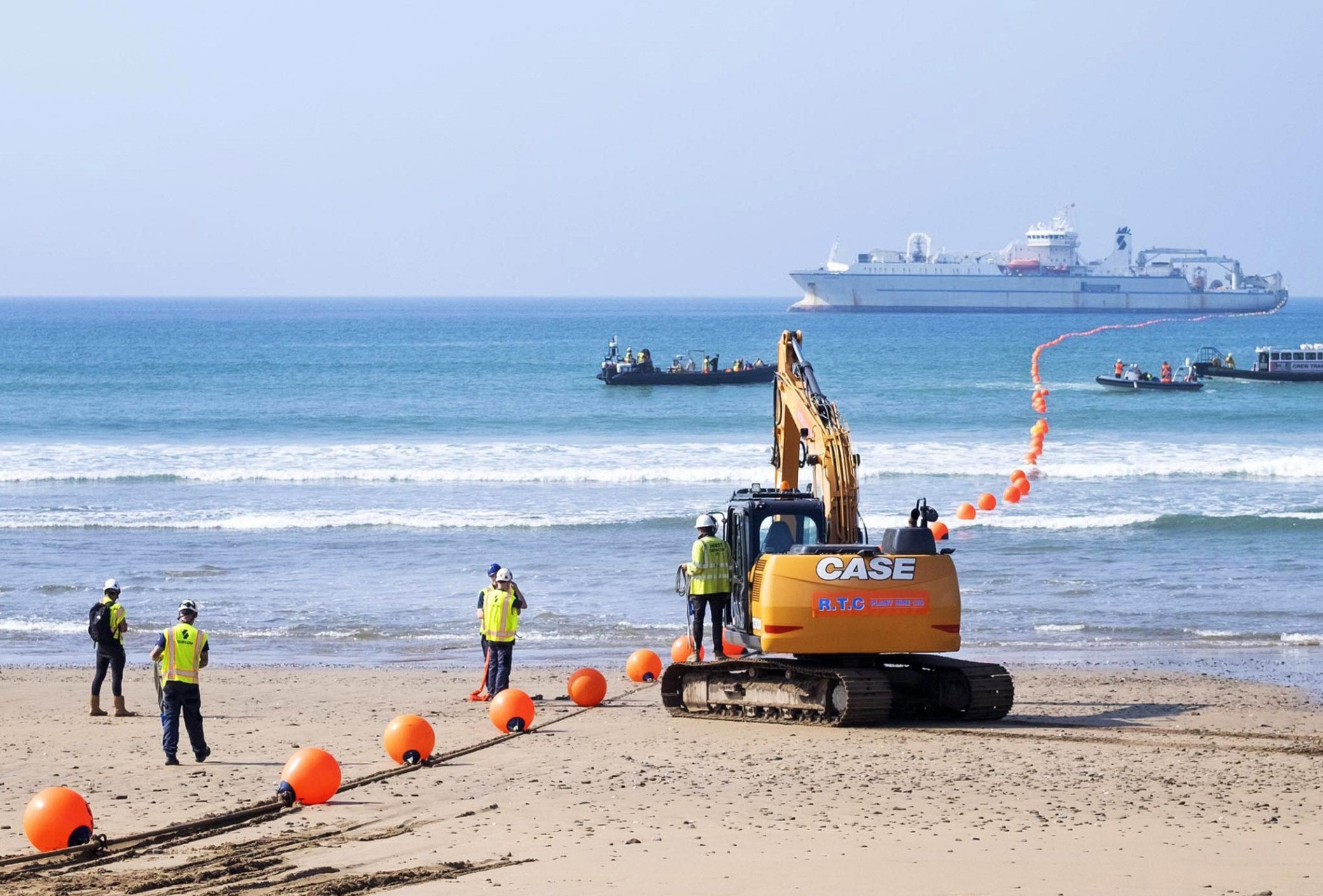
The rapid advancement of technologies like artificial intelligence (AI), big data, and cloud computing is fueling a growing demand for high-performance connectivity infrastructure.
Vietnam’s strategic investment in multiple undersea fiber-optic cable systems reflects a bold move to fortify its digital foundation and support its national digital transformation goals.
A weak network infrastructure would act as a “bottleneck,” stifling the development and application of advanced digital technologies and, ultimately, weakening the country’s economic competitiveness.
Viettel Group, through its member Viettel Solutions, currently leads Vietnam in investing in subsea cables, building what it calls a “robust infrastructure beneath the deep sea.”
Each day, billions of digital actions take place nearly instantaneously: video calls, international transactions, and cloud storage interactions. Behind this seamless digital experience is a massive physical backbone - global undersea fiber-optic cables.
Over 600 cables currently span more than 1.3 million kilometers across the world’s oceans, carrying over 98% of international internet traffic and serving as the essential lifeblood of the digital economy.
The submerged highways powering the digital world
Digital economy cornerstones like hyperscale data centers and cloud platforms are entirely reliant on robust connectivity infrastructure, particularly undersea cables.
These fiber-optic strands, no thicker than a garden hose, use pulses of light to transmit data across tens of thousands of kilometers underwater at extremely high speeds.
Vietnam is globally connected through a mix of cable systems - undersea, terrestrial, and satellite - but undersea cables account for over 90% of international traffic. Six major cable systems serve the country: SMW3, AAG, IA, APG, AAE-1, and ADC.
These systems are indispensable for everything from personal communications and e-commerce to international finance and global supply chain operations.
Any disruption to these lines can immediately impact broad swaths of economic and social activity, highlighting the critical importance of maintaining a resilient and secure network infrastructure.
The development of transformative technologies like AI, big data, and cloud computing places new demands on connectivity: high bandwidth (data-carrying capacity) and low latency (response time) are essential.
Bandwidth is like the number of lanes on a digital highway - the wider it is, the more data can travel simultaneously. Latency is the time it takes for data to travel from point A to point B. Lower latency means faster response times, which are crucial for cloud applications and real-time AI processes.
Training a complex generative AI model may require the transfer of petabytes (1 petabyte = 1 million gigabytes) of data across global data centers. Without high-bandwidth cables, this process could be severely delayed, hampering research and innovation.
Cloud computing, by nature, allows users to access computing resources from anywhere in the world. This is only possible through ultra-fast, low-latency connections between end users and the data centers of major providers.
A weak connectivity infrastructure becomes a bottleneck, hindering progress in digital technologies and limiting Vietnam’s global competitiveness.
Connecting Vietnam to the digital world
Vietnam’s National Digital Transformation Strategy through 2025, with a vision to 2030, identifies three pillars: digital government, digital economy, and digital society. Central to this strategy is the principle that “digital infrastructure must lead the way.” The national Information and Communications Infrastructure Master Plan (2021-2030) sets forth clear goals for undersea cable development.
By 2030, Vietnam aims to have at least 15 undersea cable systems in operation with a total capacity of no less than 350 Tbps, positioning the country as a regional data hub.
By 2035, Vietnam’s international cable systems are expected to lead the region in quantity, capacity, and quality - ensuring 90% of its connectivity routes go to major digital hubs in Asia and 10% as backups to hubs in the Americas and Europe.
Currently, Viettel is the leading Vietnamese company in undersea cable investments.
AAG: The first trans-Pacific cable directly linking Southeast Asia with the US.
IA (Intra Asia): Connects several Asian countries, and currently offers the lowest latency from Vietnam to Singapore. Viettel is the only Vietnamese carrier that both invests in and operates a landing station for this cable.
APG (Asia Pacific Gateway): Offers bandwidth up to 54 Tbps, linking 8 territories in the Asia-Pacific region.
AAE-1 (Asia-Africa-Europe 1): The only cable providing direct connectivity between Vietnam and Europe. Viettel owns one of its landing stations.
ADC (Asia Direct Cable): The newest and most advanced system, inaugurated in December 2024 and commercially operational from April 2025. ADC spans nearly 10,000 km, connects 7 landing stations, and links directly to Asia’s major internet hubs: Singapore, Hong Kong (China), and Japan. It has a maximum capacity of 50 Tbps, making it Vietnam’s highest-capacity undersea cable in operation.
Such infrastructure empowers Vietnamese companies to confidently provide digital services internationally, from software exports and IT services to cross-border e-commerce. Robust connectivity is also key to attracting foreign investment, especially from global technology giants (BigTech).
Ultra-high bandwidth and low-latency performance from cables like ADC allow Viettel to offer premium digital services, meeting rising demand for 4K/8K video, online gaming, AR/VR, and AI-powered applications.
Viettel Solutions is committed not only to performance but also to technological innovation. New-generation cables like ADC are designed with cutting-edge technology to maximize efficiency compared to earlier systems.
PV